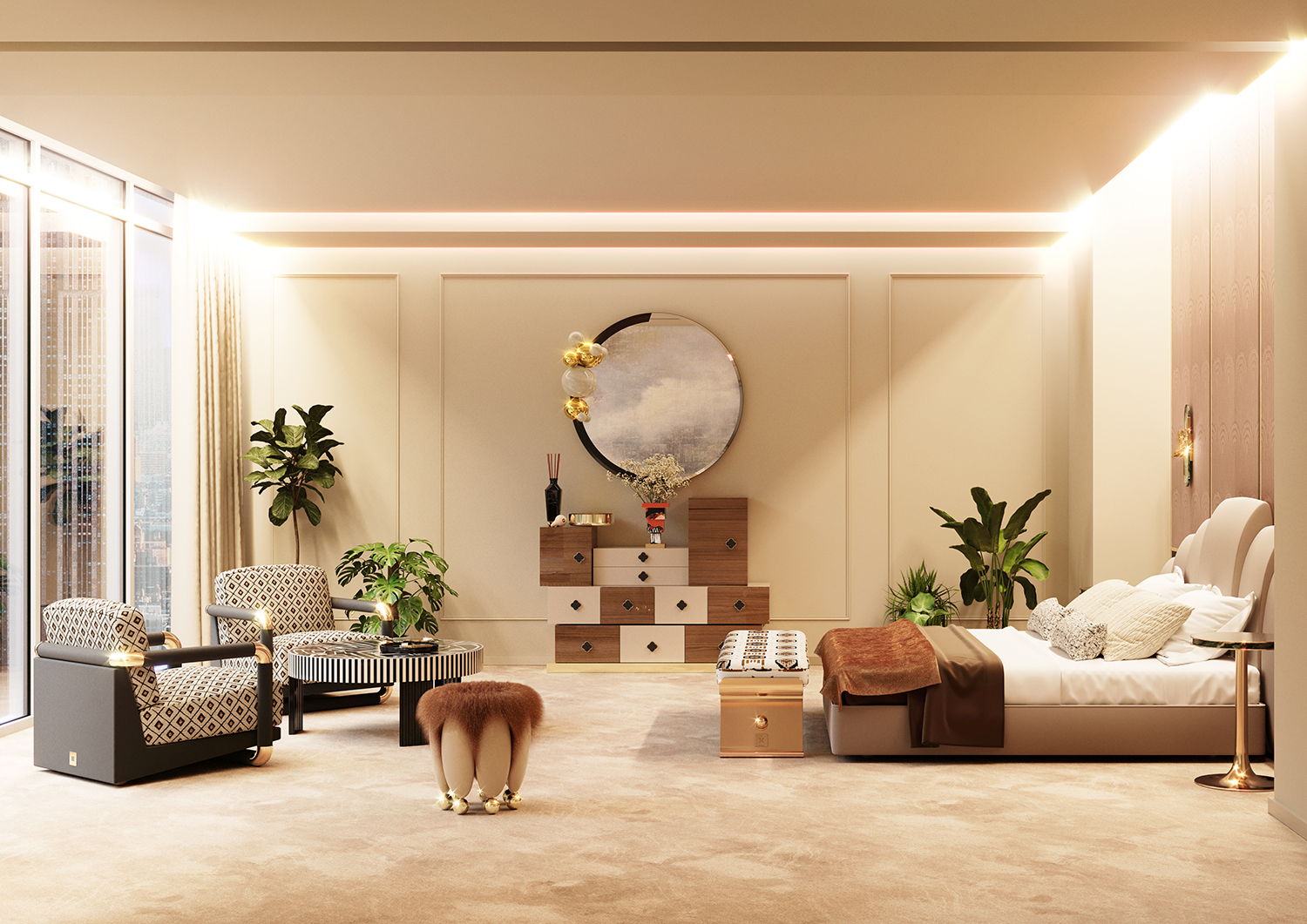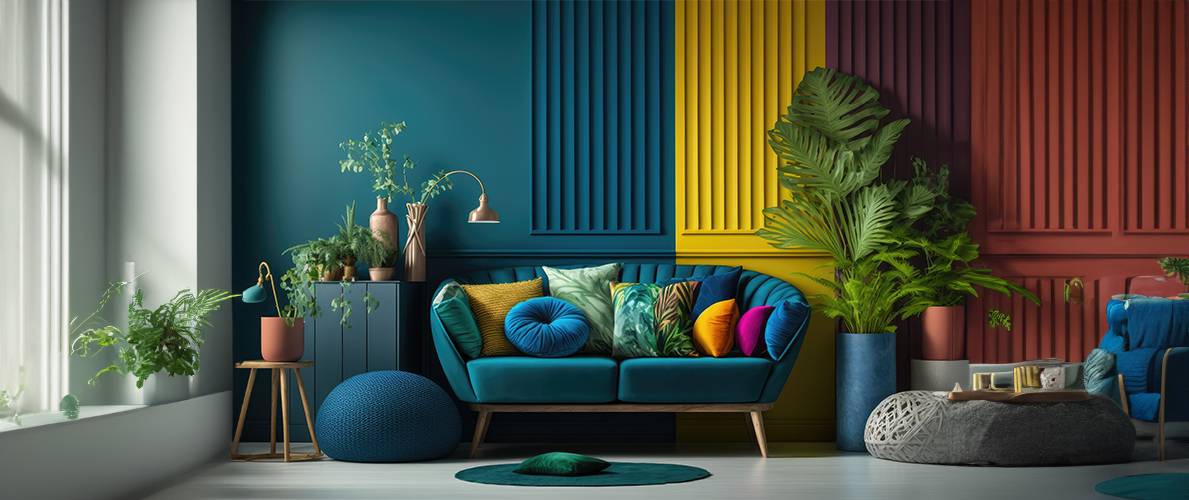Get inspired by premium miami luxury interior design for an upscale and refined atmosphere.
Get inspired by premium miami luxury interior design for an upscale and refined atmosphere.
Blog Article
Change Your Home With Crucial Principles of Interior Decoration and Visual Appeals
By recognizing the influence of color theory and the value of structure and patterns, one can produce spaces that are not just visually appealing yet likewise deeply individual. Accomplishing this balance involves even more than mere decoration; it encompasses a critical arrangement and a keen understanding of just how each component engages within a room.
Understanding Shade Concept
Comprehending the principles of shade concept allows designers to develop areas that reverberate psychologically with passengers while satisfying functional requirements. Each category plays a crucial function in establishing harmony within an area.
The emotional effect of colors is extensive; cozy colors such as reds and oranges stimulate energy and heat, while trendy tones like blues and environment-friendlies advertise calmness and serenity. The use of complementary shades enhances aesthetic rate of interest, producing striking contrasts that can elevate a space's allure.
Neutral colors, on the other hand, work as a versatile backdrop, enabling other layout components to shine. It is vital to consider elements such as lights and the room's function when selecting a shade palette, as these can change the understanding of colors throughout the day.
Eventually, a well-considered color pattern can change a room, promoting a feeling of convenience and style that straightens with the inhabitants' preferences. Proficiency of color theory is, as a result, an important skill for any indoor designer aiming to develop harmonious and welcoming environments.
Attaining Balance in Design
Just how can developers accomplish a sense of stability in their rooms? Accomplishing balance in layout is essential to creating unified insides. Designers can make use of 3 primary sorts of equilibrium: symmetrical, unbalanced, and radial. In proportion balance entails setting up elements equally around a central factor, promoting a sense of order and peace. This type often includes pairs of furnishings or artwork, boosting visual security.
Asymmetrical equilibrium, on the other hand, counts on differing components that still achieve a natural appearance. This technique permits for more vibrant and informal plans, providing passion while keeping equilibrium. By meticulously choosing differing sizes, colors, and appearances, designers can produce an aesthetically engaging space that really feels balanced yet energised.
Radial balance emphasizes a main focal point with aspects emitting outside. This style is commonly seen in round layouts, where furniture and decoration develop a cohesive surround that draws the eye internal.
Inevitably, achieving balance needs thoughtful factor to consider of range, percentage, and the relationships between aspects. luxury interior design. By skillfully applying these balance principles, designers can change areas right into settings that really feel both cosmetically pleasing and functionally unified, boosting the total experience for occupants
Significance of Spatial Understanding

A keen sense of spatial awareness enables designers to determine focal factors within a space, leading the visitor's focus to key features while maintaining an overall sense of unity. It also aids in the strategic positioning of illumination, which can substantially affect the assumption of room and state of mind. Furthermore, understanding spatial partnerships makes it possible for the developer to accommodate the certain demands of occupants, making sure that each area serves its designated purpose without endangering looks.
Inevitably, spatial understanding is important for optimizing the capacity of any indoor area. By carefully taking into consideration the interplay between measurements, layout, and feature, designers can develop atmospheres that not only fulfill useful needs however also stimulate a sense of convenience and beauty, boosting the overall living experience.
Incorporating Structure and Patterns
Embracing a varied variety of appearances and patterns can considerably boost the visual and responsive appeal of an indoor space. The strategic usage of various products-- such as wood, metal, material, and rock-- creates deepness and passion, making a space really feel more welcoming and vibrant. As an example, integrating smooth surface areas with rough structures can develop a balance that draws the eye and involves the detects.
When integrating patterns, take into consideration both range and repetition. Big patterns can work as centerpieces, while smaller sized, refined designs can complement other aspects without frustrating the room. Layering patterns, such as pairing floral pillows with candy striped tosses, try this website includes intricacy and a sense of harmony if performed attentively.
It is also vital to maintain a cohesive shade palette, guaranteeing that appearances and patterns function with each other as opposed to contend for attention. By selecting a couple of vital structures and patterns, you can produce a combined aesthetic that mirrors your individual style while enhancing the overall setting of the space. Eventually, the careful unification of these components can transform a mundane room into a sophisticated setting abundant with character and warmth.
Personalizing Your Room
Producing a space that mirrors your character is important to attaining an absolutely inviting environment. Customization in interior decoration enables you to infuse your special style and passions into your home, changing it from a simple sanctuary into a sanctuary that talks to who you are. Begin by picking a color scheme that resonates with your feelings-- bold colors can energize, while soft tones use serenity.
Include artwork and decoration that reflect your enthusiasms, whether it be travel, nature, or abstract ideas. Presenting personal collections, such as publications, photographs, or mementos, can stimulate cherished memories and produce prime focus within a space. In addition, think about tailoring functional pieces, like upholstered furnishings, to align with your visual choices.

Final Thought
Finally, the change of a home with the important principles of indoor layout and visual appeal requires a thorough understanding of color theory, balance, spatial understanding, structure, and her latest blog customization. Each component adds considerably to producing a harmonious and useful living setting - miami interior design. By thoughtfully integrating these principles, individuals can enhance the visual appeal and emotional resonance of their areas, eventually fostering a home that reflects distinct useful reference identities while offering comfort and practicality
Report this page